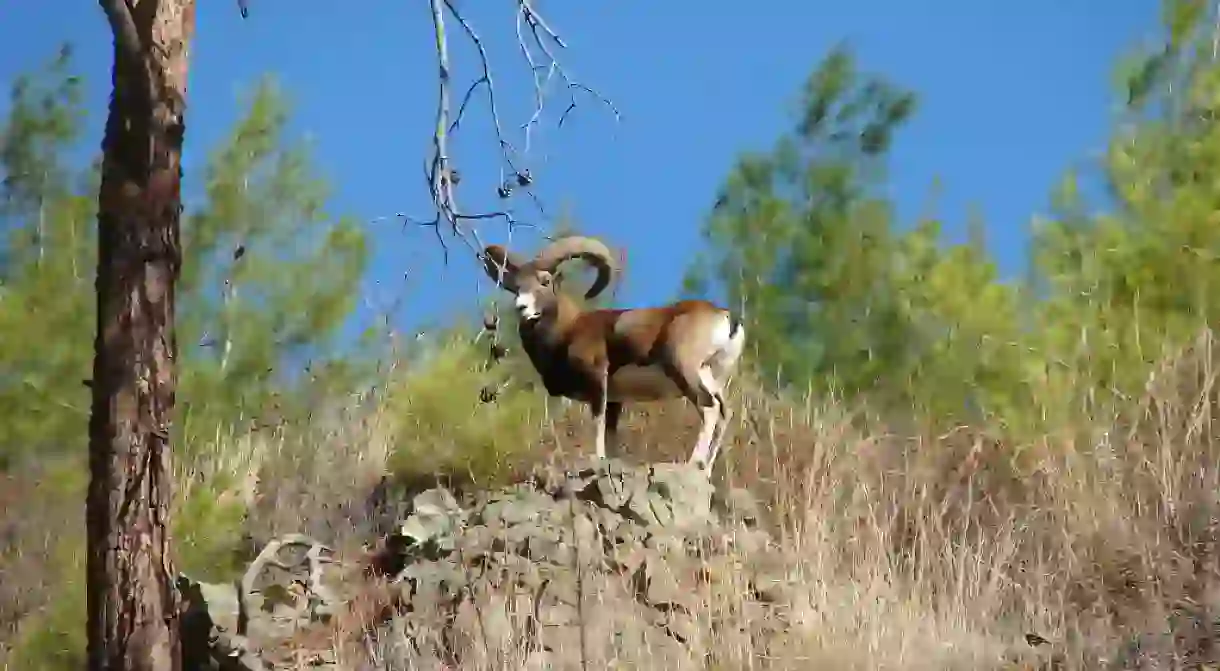16 Photos Of Wonderful Animals You'll Find In Greece

Due to its location in the Mediterranean Basin, Greece has a wide variety of fauna and flora, in the sea as well as on land. Here is a small selection of the animals you may encounter in this beautiful country.
The Kri-kri Goat
Also called the Cretan goat, agrimi, or Cretan ibex, the kri-kri is probably the most famous of native Cretan animals. Thought to have been brought to the country from Persia thousands of years ago, the kri-kri goat, described as a ‘feral domestic goat,’ is now considered native to Crete and can be found on three satellite islands offshore: Dia, Thodorou, and Agii Pantes. Its conservation status is vulnerable, and the animal is now a protected species.


The Cretan Spiny Mouse
The adorable Cretan spiny mouse is another species endemic to Crete. With coarse, stiff hairs on its back and tail, it has a more pointed face than other species of spiny mice. Feeding on grass and seeds, this small nocturnal forager has fur that varies from yellow to red, or sometimes gray or brown on the face and back, with white fur on the underside.


The Beech Marten
The beech marten – a common small carnivore found throughout Greece – is another animal species you may encounter in nature. When it doesn’t find small prey, it feeds largely on fruits and nuts. Since it is not hunted for its fur anymore, a population increase has been recorded – even within small towns.


The Badger (Arcalos)
The badger of Crete, or arcalos, is a local subspecies of the common badger. With a thick, rough coat and distinctive white strap starting at the edge of the muzzle and going to the back of the head, this little carnivore feeds on hares, rats, mice, as well as worms and fruits plus snails. Very common in Crete, it usually lives at an altitude of up to 1500 meters, and though hunted in the past for its skin, it is now protected, with large populations in some areas, such as the small city of Arkalohori, or ‘the village of badgers.’


The Cypriot Mouflon
As the biggest animal of the Cyprus fauna, the Cypriot mouflon belongs to a group of wild sheep thought to be the ancestors of domesticated sheep. The animal is very shy – scaring easily – and agile, moving very fast on the steep slopes of the forests. Scientists think the species may have come from Asia to Cyprus during Neolithic times. After escaping extinction during the 20th century, the Cypriot mouflon is now successfully protected.


The Loggerhead Turtle
Loggerhead turtles are common in Greece, mainly in Zakynthos, Peloponnese, and Crete, as these locales are home to important nesting areas for the turtles. While they are awkward on land, these little animals become agile creatures once in the water. The country has several care centers where volunteers and visitors from around the world can come and help and learn more about these fragile animals.


The Dolphin
Dolphins are common in Greece, although the biodiversity in the Mediterranean is not as diverse as in other oceans or larger seas. Four kinds of dolphins are found in the waters, namely the bottlenose dolphin, the common dolphin, the stripped dolphin, and the Risso’s dolphin, and they can be spotted in various locations, though the main one is the Gulf of Corinth. You even might catch sight of one playing in the water the next time you visit an island.


The Mediterranean Monk Seal
Probably the rarest of all animals you can spot in Greece, the monk seal is a cave-dwelling species of the marine mammal. With just over 600 remaining in the wild, the Mediterranean monk seal really is a rare breed. Hunting and the destruction of their habitat by man are the main reasons for its decline; therefore, when a new colony is discovered, it is kept secret to protect the animals.















